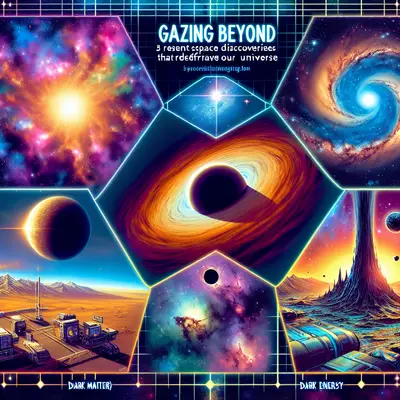1. The Unimaginable Size of the Universe
If you thought the Earth was large, brace yourself for a cosmic reality check. The observable universe is believed to be around 93 billion light-years in diameter. To give that colossal figure some context, if you were to travel at the speed of light (approximately 186,000 miles per second), it would take you 93 billion years to traverse its vast expanse from end to end.
2. The Intriguing Mystery of Dark Matter
Despite being invisible and undetectable, scientists predict that dark matter constitutes about 27% of the universe. This elusive substance doesn't interact with electromagnetic forces, which means it doesn't emit, reflect, or absorb light. However, its gravitational effects on galaxies suggest its substantial presence, making it one of the most captivating celestial enigmas.
3. The Existence of Exoplanets
Beyond our solar system lies an exciting realm of exoplanets. These celestial bodies orbit stars other than our Sun and have the potential to support life. The Kepler Space Telescope has identified over 4,000 of these intriguing planets since its launch in 2009. Some of these exoplanets, like Kepler-22b, have been found in the 'habitable zone', where conditions might be just right to harbor liquid water and possibly, life.
4. The Ever-Expanding Universe
The universe isn't static. In fact, it's expanding! This cosmic revelation was brought to light by Edwin Hubble in the 1920s. This expansion means that galaxies are moving away from each other, and the ones further away are moving faster, a phenomenon known as "Hubble's Law". This also hints at the possibility that the universe was once condensed into a single point, leading to the Big Bang theory.
5. The Silent Symphony of Space
In space, no one can hear you scream. This famous tagline from the movie 'Alien' is scientifically accurate. Sound waves need a medium to travel, and the vacuum of space provides none. While space might be silent, it isn't completely quiet. Various space probes have recorded electromagnetic vibrations from celestial bodies and translated them into sound, creating a silent symphony of space.
Conclusion
The universe is a fascinating place, filled with mysteries and wonders that continually challenge our understanding of the cosmos. These five cosmic revelations serve as a humble reminder that we are but tiny, transient beings in the grand scheme of the universe. So, the next time you gaze up at the night sky, remember: the stars you see are just the tip of the cosmic iceberg.



